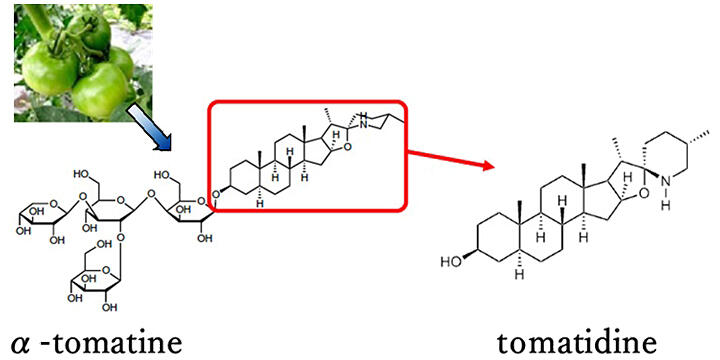A research group led by Associate Professor Satoshi Deyama and Professor Katsuyuki Kaneda of the Faculty of Pharmacy at the Institute of Medical, Pharmaceutical and Health Sciences at Kanazawa University, Graduate Student Rinako Sugie of the School of Pharmacy at the Institute of Medical, Pharmaceutical and Health Sciences at Kanazawa University, and Graduate Student Masaki Tabata of the Division of Pharmaceutical Sciences at the Graduate School of Medical Sciences at Kanazawa University has announced their discovery that tomatidine (a steroidal alkaloid abundant in tomato stems, leaves, and unripe fruits) and α-tomatine (a steroidal alkaloid glycoside) are effective in preventing and treating depression. The findings were published in the September 13, 2023 online edition of the international journal Nutritional Neuroscience.

Provided by Kanazawa University
Mechanistic target of rapamycin complex 1 (mTORC1) is a phosphatase complex involved in diverse functions, such as cell proliferation, survival, and synaptic plasticity. Scientists have shown that the activation of mTORC1 signaling in a brain region called the medial prefrontal cortex (mPFC: a brain region located in the medial region of the frontal lobe of the brain) is important for the antidepressant effect of the general anesthetic ketamine. However, ketamine has side effects, such as severe dependence, hallucination, and delusion, and is classified as a narcotic in Japan.
In this study, the research group searched for compounds with antidepressant effects among food ingredients with mTORC1-activating activity. In the process, tomatidine (which is abundant in unripe tomato fruits, stems, and leaves) was targeted for its activation of mTORC1 signaling. Through behavioral experiments with mouse models of depression, the researchers investigated whether tomatidine and tomatine could play a role in activating mTORC1 within the mPFC to elicit antidepressant effects and found that tomatidine and tomatine did indeed show depression prevention and treatment effects. The depression prevention effects of tomatidine and tomatine disappeared through local administration of rapamycin (a drug that inhibits mTORC1) in the mPFC. Similarly, the depression treatment effects of tomatidine and tomatine were blocked by the intra-mPFC infusion of rapamycin.
These results showed that tomatidine and tomatine exert depression prevention and treatment effects via mTORC1 activation in the mPFC. α-tomatine is abundant in tomato stems, leaves, and unripe fruits. Tomatine is toxic, whereas tomatidine, in which four sugar structures are removed, is less toxic. It is expected that functional foods with tomatidine as the main ingredient could be used in the prevention and adjuvant therapy of depression. Additionally, the extraction of tomatidine from not only harvested fruits but also stems and leaves discarded in the tomato production process makes effective use of agricultural waste and can contribute to the advancement of the Sustainable Development Goals.
Deyama said, "It is unknown whether tomatine and tomatidine have similar antidepressant effects in humans. Therefore, we do not recommend eating unripe tomatoes, which are rich in toxic tomatine, in the hope of attaining antidepressant effects. In the future, we hope to reduce agricultural waste by extracting tomatidine, which is safer than tomatine, from harvested tomato fruit, stems, and leaves and use it as a functional food that can alleviate stress and mood swings, prevent depression, and provide adjunctive therapy."
Journal Information
Publication: Nutritional Neuroscience
Title: Antidepressant-like effects of tomatidine and tomatine, steroidal alkaloids from unripe tomatoes, via activation of mTORC1 in the medial prefrontal cortex in lipopolysaccharide-induced depression model mice
DOI: 10.1080/1028415X.2023.2254542
This article has been translated by JST with permission from The Science News Ltd. (https://sci-news.co.jp/). Unauthorized reproduction of the article and photographs is prohibited.




